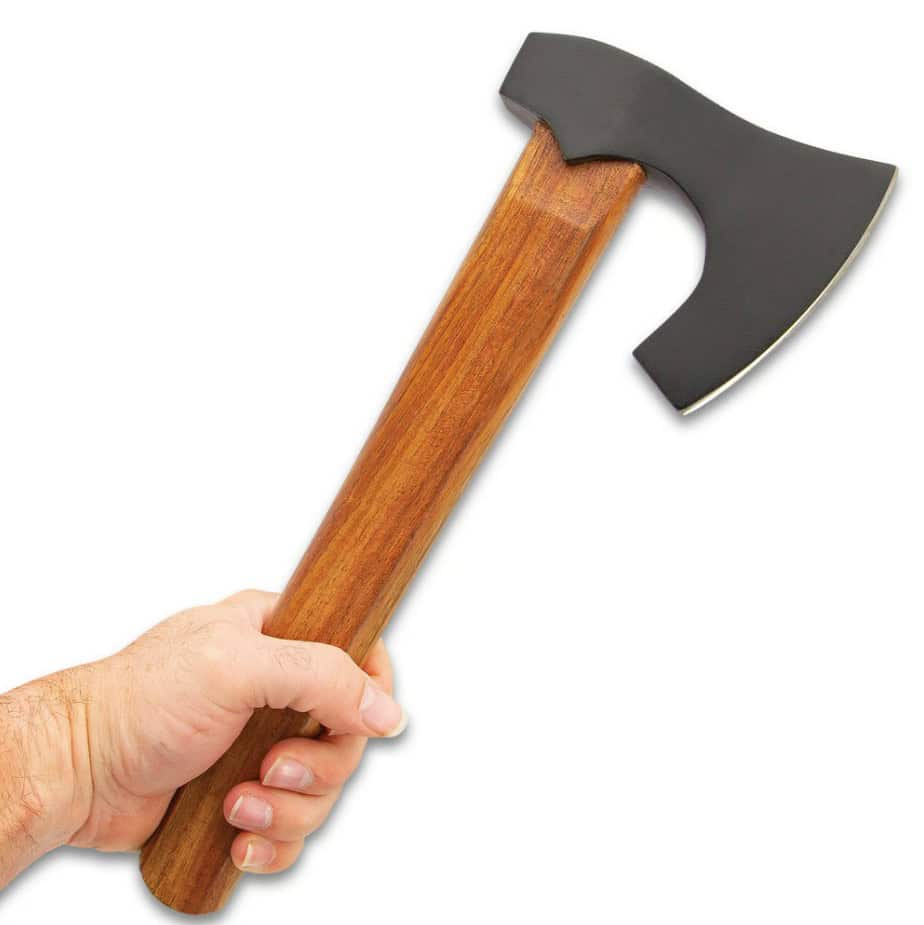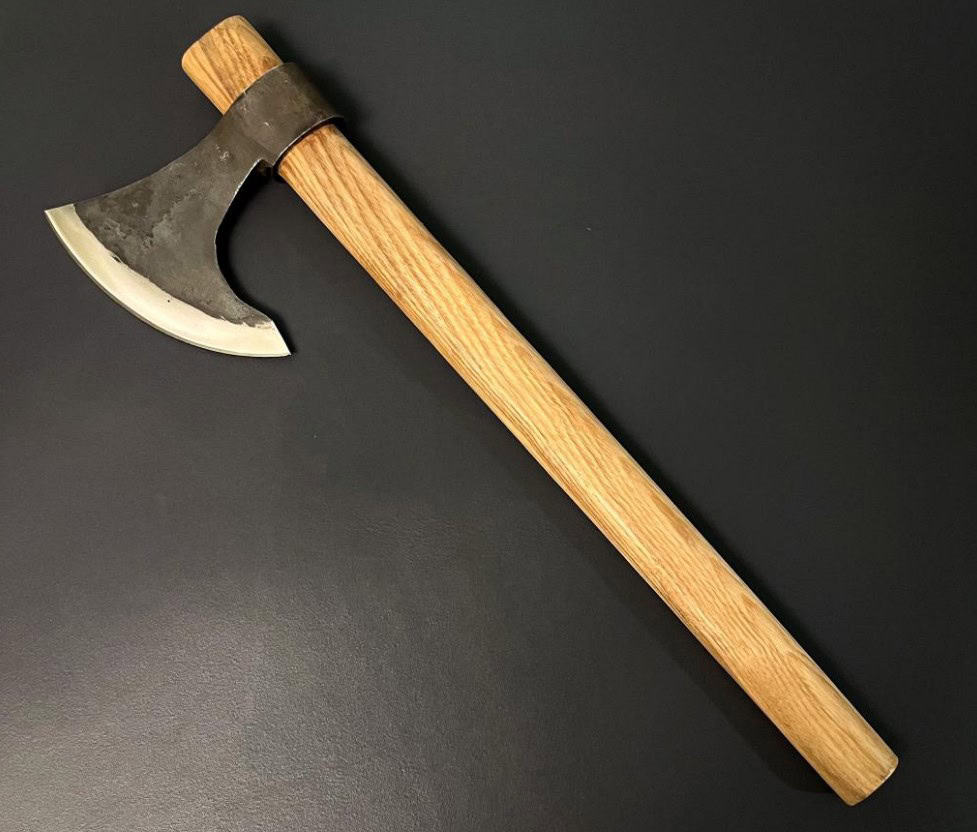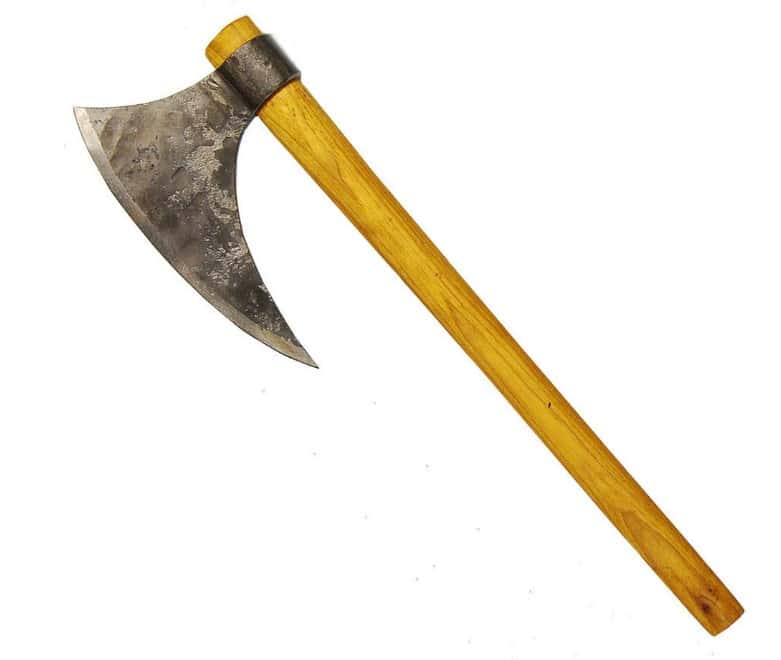What is a Bearded Throwing Axe?
TLDR: A bearded throwing axe is a type of axe with an extended lower blade designed for throwing, offering a unique balance and cutting edge ideal for both combat and recreational use.
When we talk about bearded throwing axes, we’re diving into a fascinating niche of historical weaponry that has evolved into a modern sport. The bearded axe, with its distinctive extended blade, was originally designed for versatility and efficiency in both combat and utility. However, when adapted for throwing, its characteristics transform into something uniquely thrilling.
The balance and weight distribution of a bearded throwing axe are meticulously crafted to achieve optimal flight and impact. As someone who has spent countless hours honing my throwing technique, I can attest to the exhilaration of nailing a perfect throw. The precision required, the satisfying thunk as the axe embeds itself into the target, and the rich history behind each design make this more than just a hobby—it’s a passion that connects us to ancient traditions while providing a modern-day adrenaline rush.
Historical Context of Throwing Axes
The history of throwing axes is as rich and varied as the cultures that wielded them. I’ve spent some time researching this topic, and let me tell you, it’s a journey through time that never fails to amaze me. Axe throwing as a practice dates back thousands of years, with evidence suggesting its use in hunting and warfare as early as the Stone Age. The Franks in the 5th century were particularly adept at it, using their francisca axes with deadly precision. But it wasn’t just Europeans; Native American tribes like the Nez Perce and Iroquois had their own throwing axe traditions.

What really gets me excited is how different cultures adapted the throwing axe to suit their needs. The Vikings, for instance, were masters of the bearded axe, and while they didn’t primarily use them for throwing, their design influenced later throwing axes. The tomahawk, developed by Native Americans and later adopted by European colonists, became a symbol of frontier life and warfare in North America. I’ve always thought the tomahawk represents the perfect marriage of form and function for a throwing axe.
As we moved into more recent centuries, axe throwing evolved from a martial skill to a competitive sport. Lumberjack competitions in Canada and the northern United States kept the tradition alive, and now we’re seeing a resurgence in urban axe-throwing leagues. It’s fascinating to me how this ancient practice has come full circle, from a crucial survival skill to a trendy social activity.
Characteristics of a Bearded Throwing Axe
When it comes to the characteristics of a bearded throwing axe, the devil is truly in the details. Over the years, I’ve come to appreciate the subtle nuances that make these axes not just tools, but works of art designed for precision and performance. The weight distribution is paramount; a well-balanced bearded throwing axe should feel almost like an extension of your arm. Too heavy, and it becomes unwieldy; too light, and it lacks the necessary impact. I find that a sweet spot exists where the head’s weight provides enough momentum for a satisfying throw without sacrificing control.
The handle length and balance are equally crucial. A longer handle gives you more leverage and can help with accuracy over greater distances, but it also requires more skill to manage. Personally, I prefer a handle that’s around 16 to 18 inches—long enough to give me control but short enough to allow for quick, fluid movements. The balance point should ideally be just below the head, giving you a sense of stability and control as you prepare to throw.
Then there’s the blade shape, which is where the bearded design really shines. The extended lower portion of the blade, or “beard,” not only adds to the axe’s aesthetic appeal but also serves a functional purpose. It allows for a more extended cutting edge without adding unnecessary weight. For throwing purposes, the beard can help with sticking the axe into the target more reliably, as it provides a broader surface area for impact. Some modern designs even incorporate slight modifications to the beard to enhance aerodynamics and improve flight stability.
Throwing Techniques
When it comes to throwing techniques, there’s a blend of art and science that makes it endlessly fascinating. Getting the basics right can make all the difference, and trust me, nailing that perfect throw is one of the most satisfying feelings. Let’s start with the basic throwing stance and grip. Your stance should be balanced and relaxed, with your feet shoulder-width apart. I like to position my dominant foot slightly forward, which gives me a stable base and helps with accuracy. The grip is crucial too—hold the axe firmly but not too tight, almost like a firm handshake. This allows for a smooth release without straining your muscles.
Next up is the rotation and release method. The goal is to achieve a consistent rotation so that the axe sticks into the target blade-first. I find that a one-handed over-the-shoulder throw works best for me. Start with the axe behind your head, elbow bent, and then bring it forward in a smooth, controlled motion. Release the axe when your arm is fully extended, aiming for a fluid follow-through. It might take a few tries to get the timing right, but once you do, it feels like magic. Here’s a great YouTube video that demonstrates these techniques in action.
Distance and accuracy are the final pieces of the puzzle. The standard throwing distance is usually around 12 to 15 feet, but this can vary depending on the competition or practice setup. I always start closer to the target and gradually move back as I get more comfortable with my throws. Accuracy comes with practice and a keen eye for detail. Focus on a specific point on the target, and make minor adjustments to your stance and release until you consistently hit your mark. In my experience, it’s all about muscle memory and fine-tuning your technique over time.
Modern Bearded Throwing Axe Competitions
Axe throwing as a sport has exploded in popularity over the past decade, and I’ve been thrilled to watch it grow from a niche hobby to a mainstream competitive activity. Urban axe throwing venues have popped up in cities across North America and beyond, making the sport accessible to a whole new generation of enthusiasts. These competitions blend the traditional skills of axe throwing with a modern, social atmosphere that’s just electric.
The rules and scoring systems in competitive axe throwing are designed to test both skill and consistency. Most leagues use a target with five scoring rings, with points ranging from 1 to 5, and a bullseye worth 6 points. What really keeps things interesting are the “killshot” rings—two small circles at the top of the target worth 8 points each. These are only available in the final throw of a round, adding a strategic element that I find absolutely thrilling. Matches typically consist of several rounds, with the highest total score determining the winner.
When it comes to the axes used in competitions, there’s a fascinating variety of designs out there. While traditional bearded axes are still popular, many throwers opt for modern interpretations that blend historical aesthetics with cutting-edge materials and engineering. Personally, I’m partial to axes with a bit more weight in the head—around 1.5 to 2 pounds—as I find they stick more consistently. The WATL (World Axe Throwing League) and IATF (International Axe Throwing Federation) have specific guidelines for competition axes, including weight and size restrictions, to ensure a level playing field.
What I find most exciting about modern axe throwing competitions is how they’ve managed to preserve the essence of this ancient skill while making it accessible and appealing to a wide audience. The community that’s grown around the sport is incredibly welcoming, and there’s always someone willing to share tips or techniques. Whether you’re a seasoned pro or a complete novice, there’s a place for you in the world of competitive axe throwing.
Where Can I Get My Own Bearded Throwing Axe?
Finding your own bearded throwing axe can be an exciting journey, whether you’re a history enthusiast or a modern sportsperson. Look for specialty shops that focus on historical weaponry or visit online retailers that offer a variety of axe designs tailored for throwing. Ensure you choose an axe that balances craftsmanship with durability, ideally made from high-quality materials to withstand repeated use.
BUDK

What I Like:
- Design: This Viking-inspired throwing hatchet features a black hand-forged, 5-inch stainless steel bearded axe head with a razor-sharp 4-inch edge and a flat back.
- Handle: The strong hardwood handle is square-shaped with two flat edges and two curved edges, providing an excellent grip.
- Balance: With a 12 1/2-inch overall length, this hatchet is perfectly balanced, making it easy to hit your target.
RavenForge

What I Like:
- Historical Design: This throwing axe is inspired by the iconic Viking Age bearded axe, offering a sense of historic presence and authenticity.
- Customizable Features: The axe can be personalized with hand-burned rune symbols by the Raven Forge workshop team, adding a unique touch to your throwing companion.
- Quality Construction: Made with a blackened forged head and polished blade edge, it features a high carbon steel blade and an English ash haft for durability and weight.
HB Forge

What I Like:
- Compact yet powerful head: The head measures between 8 and 9 inches wide and around 6 inches long, providing a balanced and effective design.
- Ergonomic handle: Featuring a 19-inch handle, it ensures comfortable and secure grip for optimal control.
- Lightweight construction: The head weighs approximately 1.5 lbs, with a total weight of just 2.0 lbs including the handle, making it easy to handle and maneuver.
Knives of the North

What I Like:
- Axe Length: This impressive axe measures 18 inches in length, providing excellent reach and leverage.
- Axe Head: The head boasts a 4-inch cutting edge and a 7.25-inch width, delivering powerful and effective strikes.
- Axe Weight: Weighing just 23 ounces, this axe is lightweight enough for prolonged use without compromising on strength.
Final Thoughts
Delving into the world of bearded throwing axes has been an exhilarating journey that blends history, craftsmanship, and modern sport in a way that’s truly unique. The evolution from ancient combat and utility tool to a finely-tuned piece of sporting equipment showcases the versatility and enduring appeal of the bearded axe. Personally, I find the balance and precision required for throwing to be incredibly satisfying, and the thrill of hitting a perfect target never gets old.
I appreciate the meticulous craftsmanship that goes into creating these axes, especially the balance of weight and the extended blade. While I love the rich history and tradition behind the bearded axe, I’m equally excited about its role in contemporary competitions and the vibrant community that has sprung up around this sport. Exploring the coolest weapons in history, including the bearded axe, provides a fascinating perspective on how ancient tools continue to influence and inspire modern activities. It’s a perfect blend of past and present, bringing a slice of ancient tradition into the modern age.
